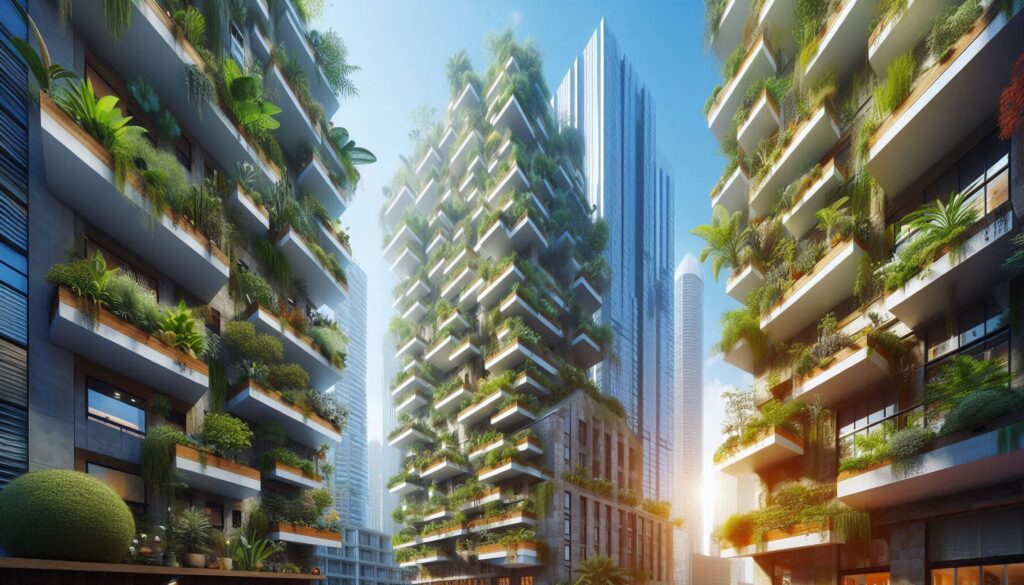As urban populations continue to grow and available space becomes increasingly limited, innovative solutions are needed to bring greenery and sustainability into city environments. Vertical gardening has emerged as a practical and creative way to maximize space and introduce lush greenery into urban landscapes. In this article, we will explore the concept of vertical gardening, its benefits for urban spaces, and how this trend is revolutionizing the way we think about gardening in cities.
What is Vertical Gardening?
Vertical gardening, also known as vertical farming or green walls, involves growing plants in a vertical orientation rather than the traditional horizontal layout. This approach allows plants to be stacked or arranged vertically on structures such as walls, fences, trellises, or specially designed structures, making efficient use of limited space and turning bare walls into vibrant living spaces. Vertical gardens can be created indoors or outdoors, using a variety of plant species ranging from herbs and vegetables to ornamental flowers and succulents.
Maximizing Space Efficiency:

One of the key advantages of vertical gardening in urban spaces is its ability to maximize space efficiency. By utilizing vertical surfaces for planting, urban gardeners can grow a greater number of plants in a smaller footprint, making the most of limited space in densely populated cities. Vertical gardens can be installed on balconies, rooftops, courtyards, and even on the sides of buildings, transforming underutilized spaces into thriving green oases that beautify the urban environment and enhance quality of life for residents.
Air Quality Improvement:
Vertical gardens play a vital role in improving air quality in urban areas by helping to filter pollutants and produce oxygen. Plants in vertical gardens absorb carbon dioxide and release oxygen through photosynthesis, helping to reduce greenhouse gas emissions and combat climate change. In addition, vertical gardens can help to mitigate the urban heat island effect by providing shading and cooling effects, thereby reducing energy consumption for air conditioning and improving overall air quality in cities.
Biodiversity Conservation:
Vertical gardens contribute to biodiversity conservation in urban spaces by providing habitats for a variety of plant and animal species. By creating vertical green spaces with diverse plantings and water features, urban gardeners can attract pollinators such as bees, butterflies, and birds, promoting ecosystem health and food production. Vertical gardens also help to create green corridors and wildlife habitats in urban areas, supporting local biodiversity and enhancing urban ecosystems.
Food Production and Security:
Vertical gardening plays a crucial role in urban food production and security by enabling residents to grow their own fresh fruits, vegetables, and herbs in limited spaces. Vertical gardens can be designed to include edible plants that provide a sustainable source of nutritious food for urban dwellers, reducing reliance on imported and processed foods. Community vertical gardens and urban farms also promote food sovereignty and community resilience, empowering residents to take control of their food supply and foster a more sustainable local food system.
Aesthetics and Well-being:
In addition to its environmental benefits, vertical gardening enhances the aesthetic appeal of urban spaces and contributes to the well-being of residents. Vertical gardens can create eye-catching focal points, improve visual interest, and bring a sense of nature into urban environments, enhancing the overall livability and desirability of city landscapes. Studies have shown that exposure to green spaces and nature promotes mental health, reduces stress, and fosters a sense of connection with the natural world, making vertical gardening a valuable tool for creating healthier and more vibrant urban communities.
In conclusion, vertical gardening offers a range of benefits for urban spaces, from maximizing space efficiency and improving air quality to promoting biodiversity conservation and enhancing food security. By embracing vertical gardening practices and incorporating green walls into urban design, cities can become more sustainable, resilient, and livable for residents and the environment alike. As we continue to explore innovative solutions for greening our urban landscapes, vertical gardening stands out as a versatile and effective strategy for bringing nature back into the concrete jungle and creating thriving urban ecosystems for generations to come.

